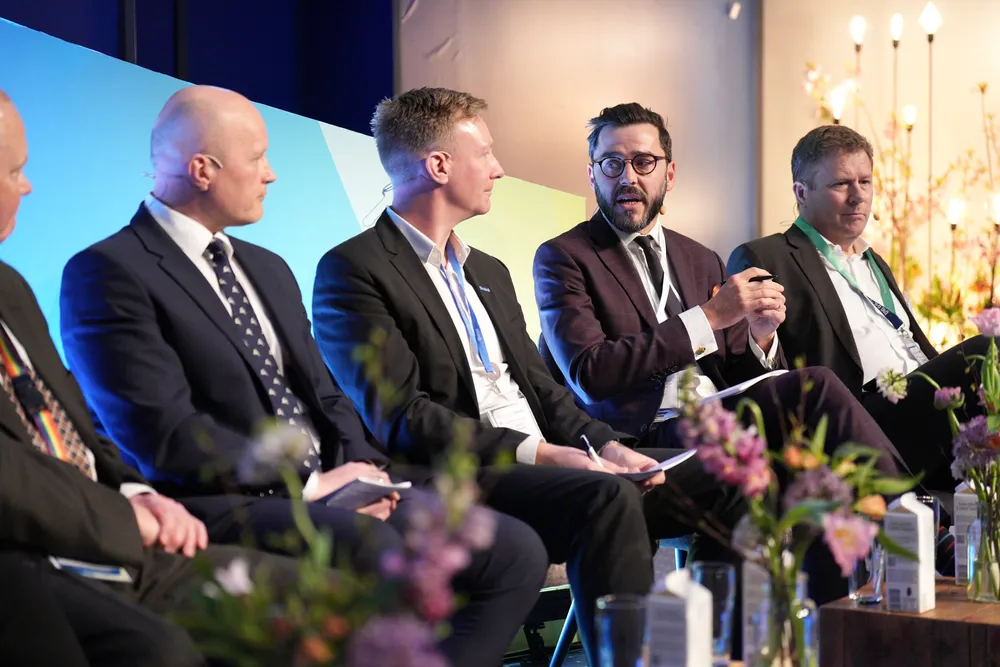Wind industry 'naive' over security of offshore infrastructure, warn experts
Orsted, Vestas and NATO security experts featured on WindEurope panel discussion on security of offshore power infrastructure

With anchors dropping like “breadcrumbs” and cable supply offers that are too good to be true, the wind industry needs to wake up when it comes to the security of its offshore infrastructure, say industry experts.
This has all served to demonstrate how vulnerable the vast undersea network of power cables that connect offshore wind farms and countries can be in the face of aggression from Russia and elsewhere, with NATO having recently pledged to enhance its military presence in the Baltic Sea.
Security concerns regarding maritime infrastructure were the subject of a panel discussion on Tuesday at industry body WindEurope’s annual event, taking place this year in Copenhagen.
The threats wind infrastructure faces are “not new,” said Todd Davis, head of cyber risk and strategy trends at Danish turbine-maker Vestas. “We've had some increase in visibility… but threat modelling as a discipline, not just in cyber security but in national security, is old math.”
“We have to ensure that those who are playing in this space know how to do that math, to do the threat modelling, the threat analysis.”
“It isn't just about electricity, just about wind,” he said. “It's looking at the entire threat landscape and saying, okay, what do I need to pay attention here to design and operate securely at scale?”
Mindaugas Keizeris, the CEO of Lithuania’s grid operator EPSO-G, joked that a “low-hanging fruit would be to invest and fix all the anchors of all these ships… Simple solutions.”
“Coincidentally and unexpectedly,” he said that in the last 18 months 11 offshore grid elements have been disconnected, highlighting an incident that occurred on Christmas Day last year when an interconnector between Finland and Estonia was cut in a suspected anchor dragging incident.
He said that much of the thinking around this topic is “about how to deal with the consequences, but not with the causes.”
If a suspicious drone is moving over energy infrastructure that it shouldn’t, “let's put the drone down,” he said, rather than spending time calling around Europe asking, “‘is it your drone?’”
In that case, “forget it. We will see the day after tomorrow on TV what has happened.”
Anu Eslas, head of European and Baltic affairs at developer Ignitis, agreed that ships are “losing their anchors like breadcrumbs.”
On the flip side, she said that this shows that interconnecting different power markets to create a stronger, more reliable European transmission system is seen as something worth targeting by global adversaries.
Some cable threats ‘less known and less debated’
Michael Suhr, head of stakeholder relations at Copenhagen-based cable-maker NKT, said that what is not so well known is the “physical threat when it comes to what can be done with cables.”
This includes the threat of what can be “placed in cables,” analysis of how fibres can be “misused” and “where the weak points might be.”
“That kind of sophisticated analysis of the real threat of the subsea infrastructure is less known and less debated,” he said, calling for more regulation in this area.
Suhr highlighted that that “one big country in the Far East” is aiming to dominate cable technology, with the risk that European suppliers will be “dumped out of the market.”
This is a “solar panel threat moment,” he said, referring to how the Chinese previously all-but wiped out Europe’s homegrown solar panel manufacturers. “And that is something to be very mindful about and which has been very naively handled from various TSOs [and] governments in Europe.”
Suhr cautioned that companies should not accept “great offers” for cables where no payment is required until an “offshore wind farm gives profit 10 years down the road. Because obviously no commercial provider can compete with that.”
Europe must be a “little less naive” on this front, said Suhr, calling for a “European preference principle” given the security and other concerns that come around cable supply.
‘They won’t target the turbines, they’ll target the substation’
Julian Wieczorkiewicz, policy officer at NATO, said that Russia has been “mapping our undersea infrastructure for years” through what it calls its Undersea Research Program. “That's a very nice euphemism.”
He also cautioned that an offshore wind turbine is “not just a piece of metal with razor blades. It's packed with electronics, with sensors. These are basically computers. And we need to be very careful about what kind of IT we put in there.”
Regarding physical threats to wind farms, Wieczorkiewicz highlighted that while it may be inefficient for a hostile state to target all the turbines with missiles or drones, it is the substation that is the “brain and the heart of the whole installation.”
If that “sits out in the open, completely unprotected, it constitutes a vulnerability,” because if it’s attacked, then the whole wind farm would be disconnected from the power grid.
He added that the reason that Ukraine has been able to rapidly repair substations targeted by Russian missiles is it is one of five countries globally that happens to produce them. It would not be so quick in other European countries, “I guarantee you.”
Daniel Mortensen, defence and security chief at Danish renewables giant Orsted, said that he would much prefer if the Danish developer was able to build in the necessary security and design features that equipment needs before it is deployed.
This is crucial so that the features can be priced in “up front,” he said. “We just need to know what [is needed] and who pays.”
There is a “shared interest in security” between states and energy offtakers, said Mortensen. “And we need to split that bill.”
(Copyright)